Volvo EX30 first drive: This small and affordable electric SUV is a big deal
From under £35,000, the pint-size Volvo EX30 promises to be a highly desirable electric SUV

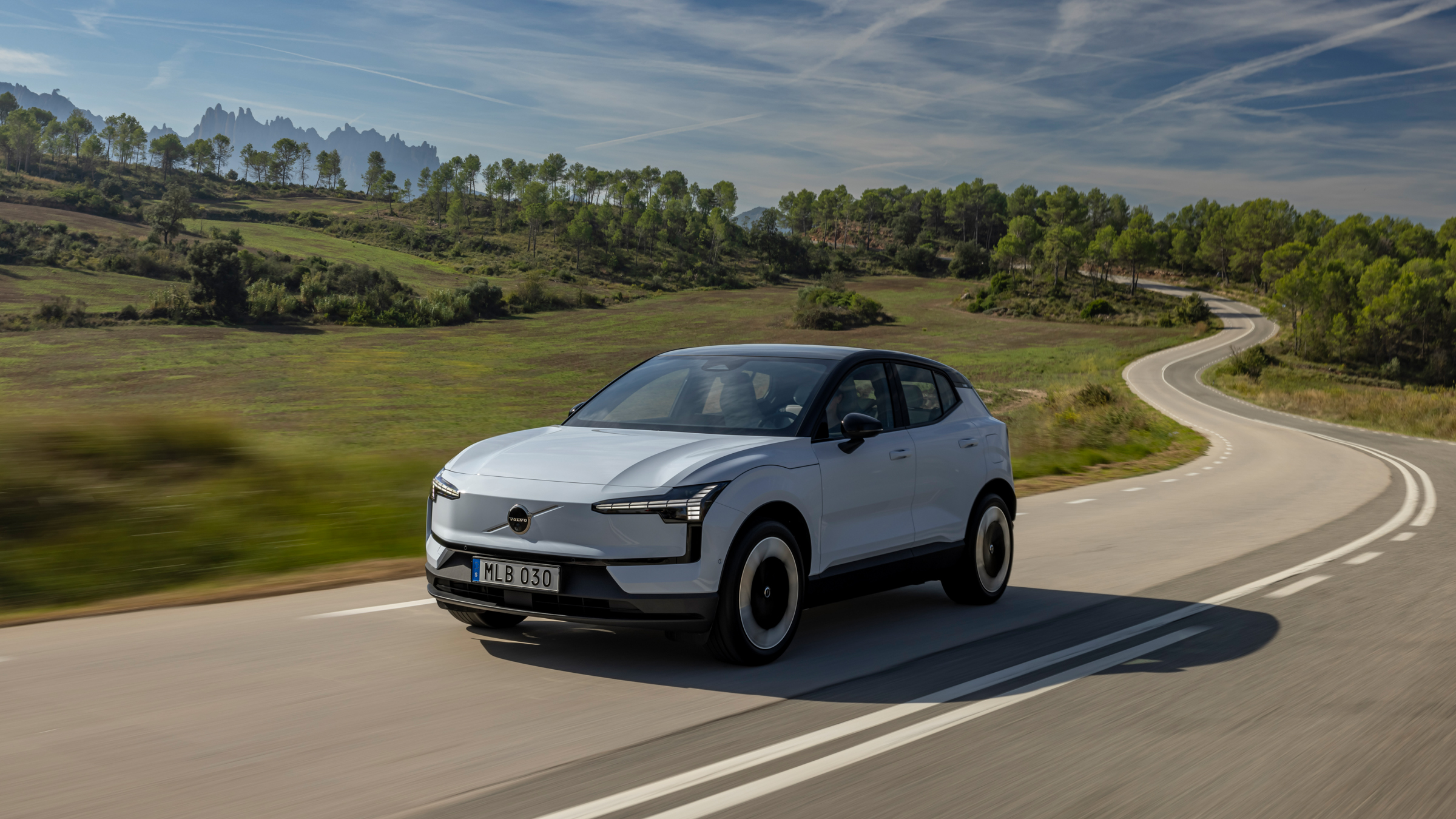
When will electric cars from premium brands finally become smaller and more affordable? We’ve all been asking for years. Now, says Volvo.
The Swedish carmaker is making a big deal about its smallest SUV to date, and with good reason. While buyers with more to spend will likely hold out for the upcoming EX90 flagship, those who don’t require the space of an XC40 Recharge now have a smaller and more affordable alternative in the EX30.
Available only as a fully-electric car (unlike the XC40), the all-new EX30 is a compact, five-seat SUV with three drivetrain options, a maximum claimed range of almost 300 miles, a relatively low weight and an interior packed with recycled materials and clever packaging to reduce complexity, cost and carbon.
A natural rival to the Jeep Avenger, the Volvo EX30 will be produced in Europe and China. It is built on the SEA platform of parent company Geely, which is also used by the closely related Smart #1 and larger Polestar 4. The EX30 also shares its foundations with the Chinese-made Zeekr X.
In a world where cars are getting bigger, heavier and evermore expensive, the Volvo EX30 could be the tonic many drivers are looking for. Does it deliver on that promise? Read on to find out.
Price and availability
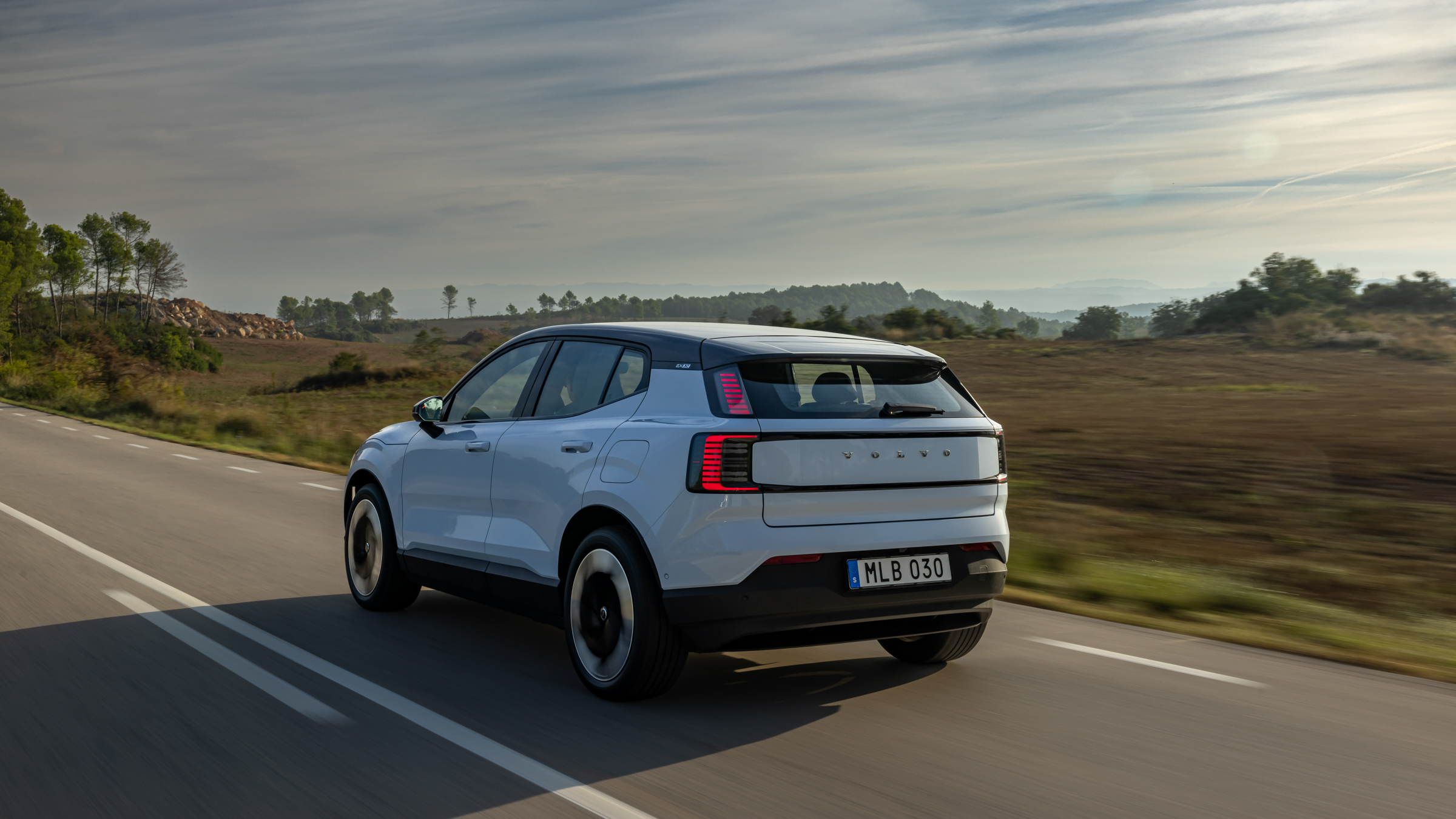
In the UK the Volvo EX30 is priced from £33,795 for the single-motor, rear-wheel-drive variant with a 49 kWh battery pack, a range of up to 214 miles and the entry-level trim level, called Plus.
The top-of-the-range EX30, with two motors, a larger 64 kWh battery pack, a range of up to 279 miles and the upgraded Ultra trim level costs £44,495. This car has masses of straight-line performance, which may tick boxes for Volvo’s marketing team (Ferrari-fast to 60 mph? Check), but the best option for most drivers is the single-motor EX30 with the larger battery pack, which costs from £38,545.
Get all the latest news, reviews, deals and buying guides on gorgeous tech, home and active products from the T3 experts
EX30 order books are open now and Volvo says the first cars will be delivered in the first quarter of 2024.
We should say at this point that Volvo provided a fleet of pre-production EX30s for journalists to drive, and said software gremlins we encountered would be addressed before the first customer cars arrive.
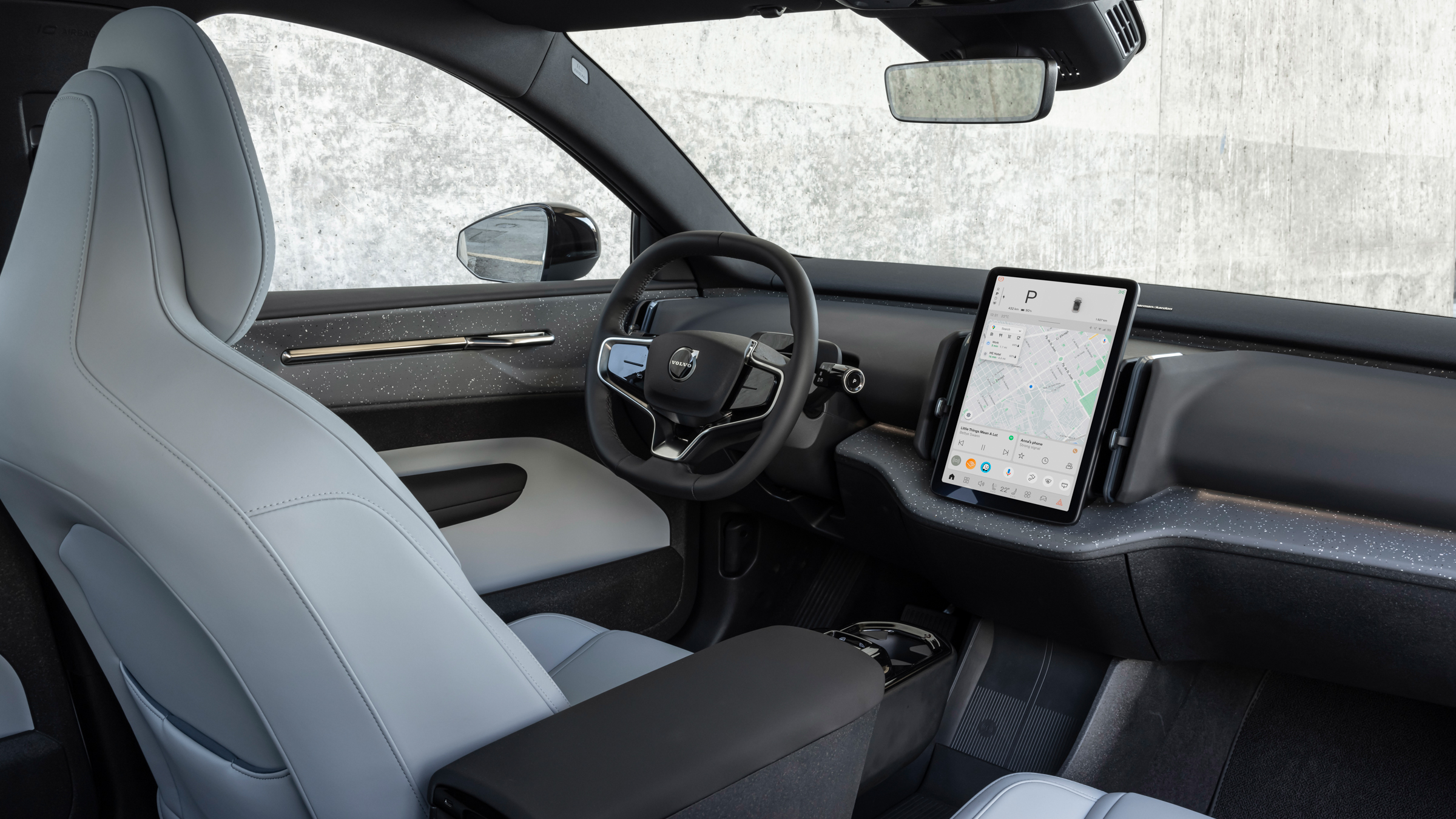
Features and design
Aesthetics are subjective, but to my eyes the Volvo EX30 is a good-looking car. Sleek and compact, but with a toned muscularity to its neatly-creased body, it benefits from a typically Scandi-cool set of colour options both in and out. Other visual highlights include the ‘Thor’s Hammer’ LED headlights, large panoramic roof, frameless door mirrors and a cohesive crispness that makes the car look far more expensive than it really is.
Specified with Cloud Blue paintwork and an Onyx Black roof, I think the EX30 looks fantastic.
An intentionally small car, the EX30 measures 4,233 mm long, 2,032 mm wide with the door mirrors unfolded and 1,555 mm tall. It weighs between 1,841 and 1,960 kg, depending on the battery size and number of motors.
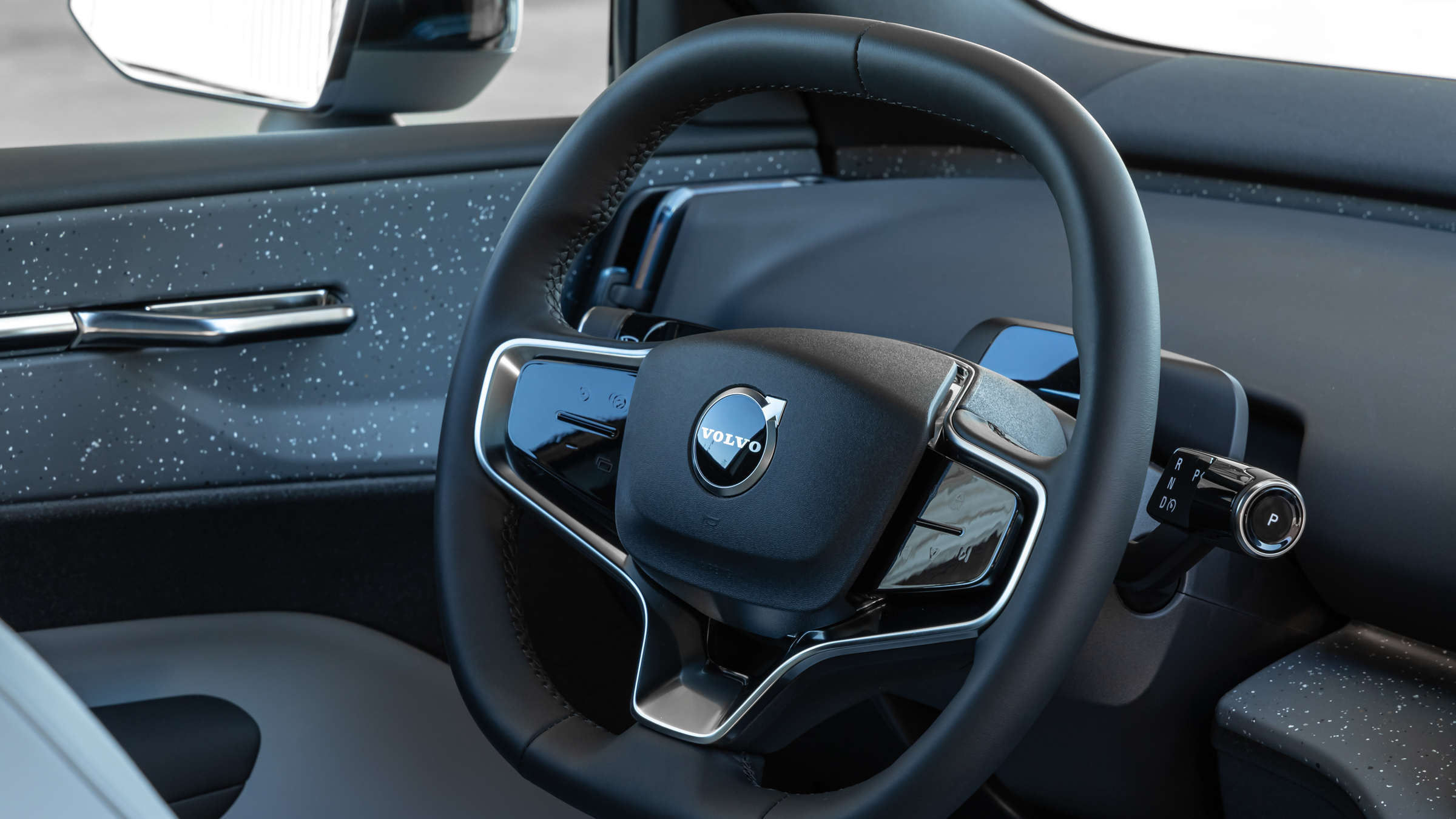
Inside, the EX30’s interior treads a fine line between minimalist and sparse. There is no display or instrument cluster behind the steering wheel, and instead readouts like your speed and gear sit at the top of the centrally-mounted, portrait-orientated, 12.3in touchscreen display, as they do in a Tesla. Like other modern Volvo and Polestar cars, the display runs Android Automotive with Google Maps, Google Assistant and Spotify all baked in. Simply log into your Google account and you’ll feel right at home. Alternatively, iPhone users have access to wired and wireless Apple CarPlay.
The system is attractive and most of the interface is arranged logical, However – and as is increasingly the case with today’s tech-packed cars – you’ll need to spend a good 20 minutes exploring the system and setting everything up just how you want it, before your first drive.
That is mostly fine, but there are some instances when it feels like Volvoi’s cost-cutting exercise has gone too far. For example, there are no physical controls for adjusting the side mirrors. Instead, you need to dig into a sub menu then use a set of buttons on the steering wheel to move one mirror, then the other.
Volvo suggests this only needs to be done once, and the mirror positions are saved to your driver profile so they’ll be correct every time you get in (and it knows who you are because your smartphone can be used as a key, of course). But if you ever need to quickly adjust the mirror, while parking for example, you’ll have to dig into the settings menu every time. Compounding the frustration is how the buttons aren’t particularly responsive – a point Volvo acknowledges but hopes to improve before customer cars arrive.
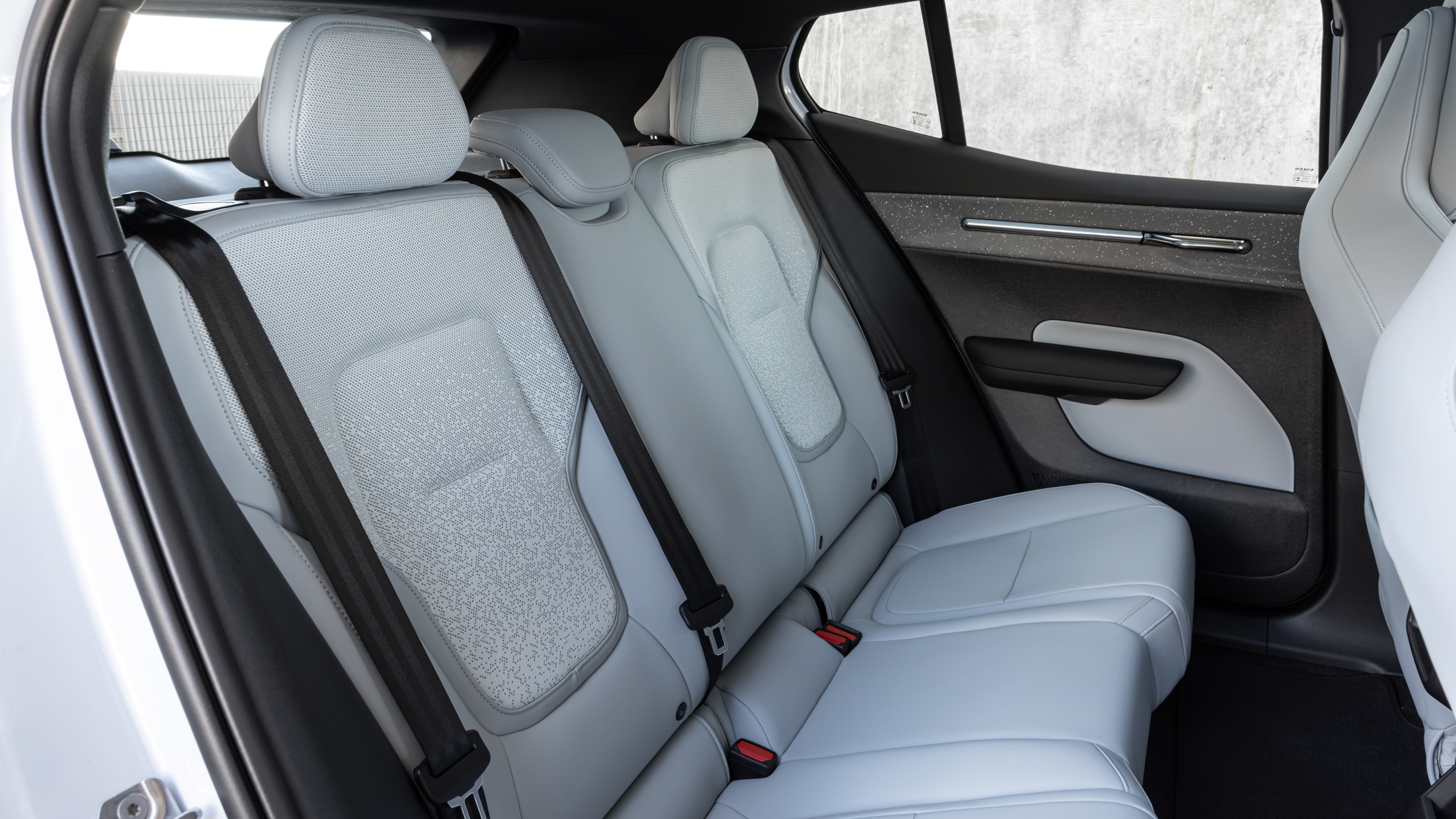
Similarly, Volvo said an issue that prevented our test car’s glove box from opening (another action relegated to the touch screen) will be looked at. The same goes for how a graphic showing nearby objects completely blocks the navigation system when the parking sensors are triggered. This happened frequently during the city centre sections of Volvo’s test route, and since there is no head-up display (due to packaging constraints, the company says), you’re left without visual navigation until the parking sensor interface disappears.
Like other manufacturers, Volvo praises the benefits of over-the-air software updates, where fixes, upgrades and even entire new features can be sent to internet-connected cars remotely instead of via a dealership visit. This is fundamentally a good thing, but carmakers run the risk of becoming overly reliant on a system that lets them ship products before they are finished, knowing they can fire out a software patch later.
In a further bid to simplify the cabin, there are no speakers in the doors. Instead they are all located in a Harman Kardon soundbar fitted below the windscreen. It’s a clever bit of packaging and frees up space for extra storage in the doors, but means music doesn't surround the occupants as it does in other cars. The system still sounds good, but you can always tell music is coming from one specific place in the cabin.
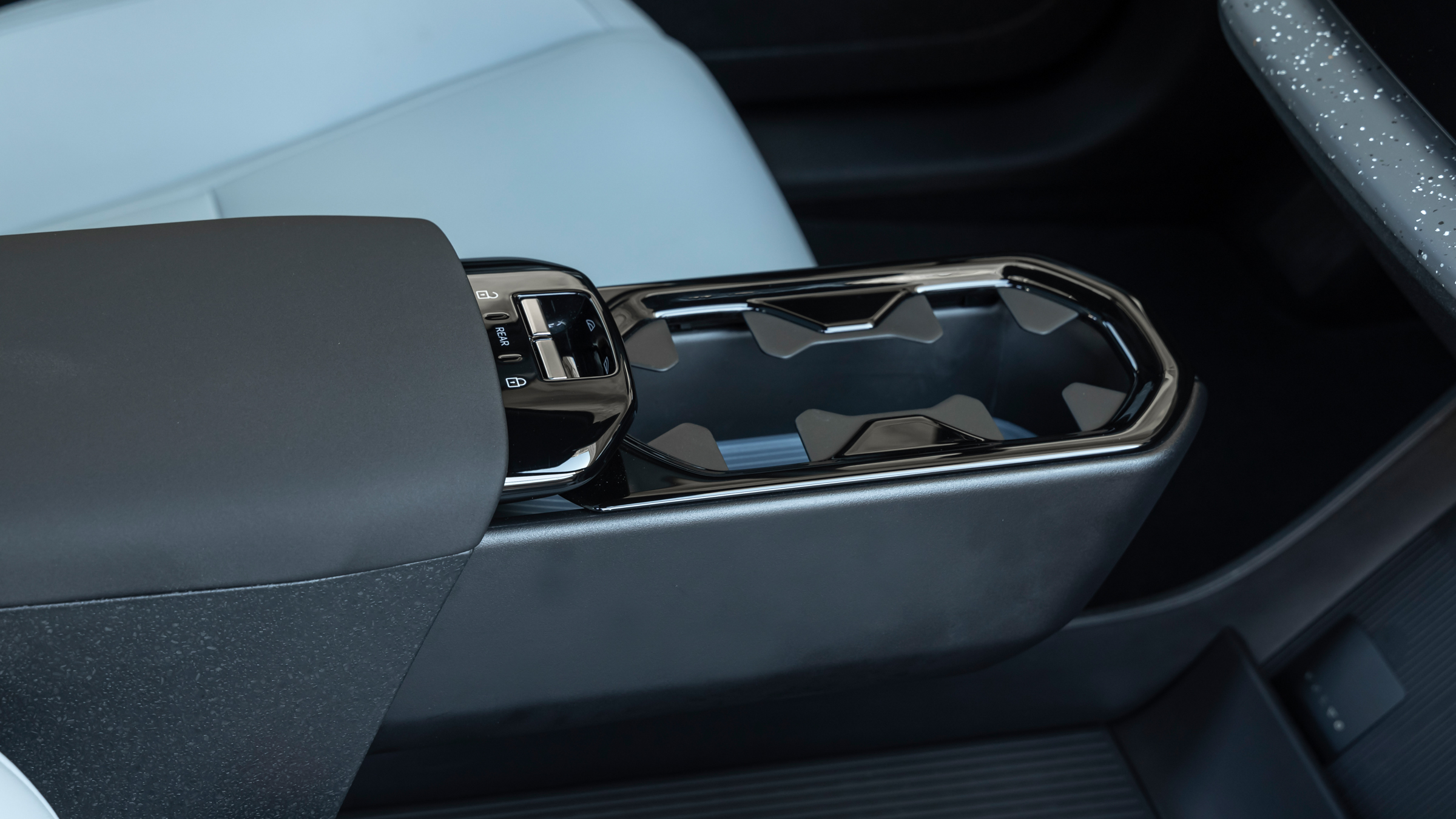
Other interior features include a wireless phone charger, but this couldn't be used on our drive because the pad was occupied by the car’s credit card-style key fob. We’re told owners who use their smartphone as a key can relegate the card to their wallet, since it would no longer be needed, and make full use of the wireless pad.
Ahead of this charger there’s a central arm rest with a spacious drawer below and a clever sliding cup holder that can be fully or partially hidden when not needed.
Much of the interior is made from recycled materials, including denim, PVC window frames, fishing nets and plastic bottles. Woven flax from linseed plants is also used for some interior panels, and there are five ambient lighting options with suitably Scandinavian names like ‘Northern Light’, ‘Forest Bath’ and ‘Nordic Twilight’. Each gradually shifts between shades and comes with an accompanying (and optional) sound effect.
Performance and handling
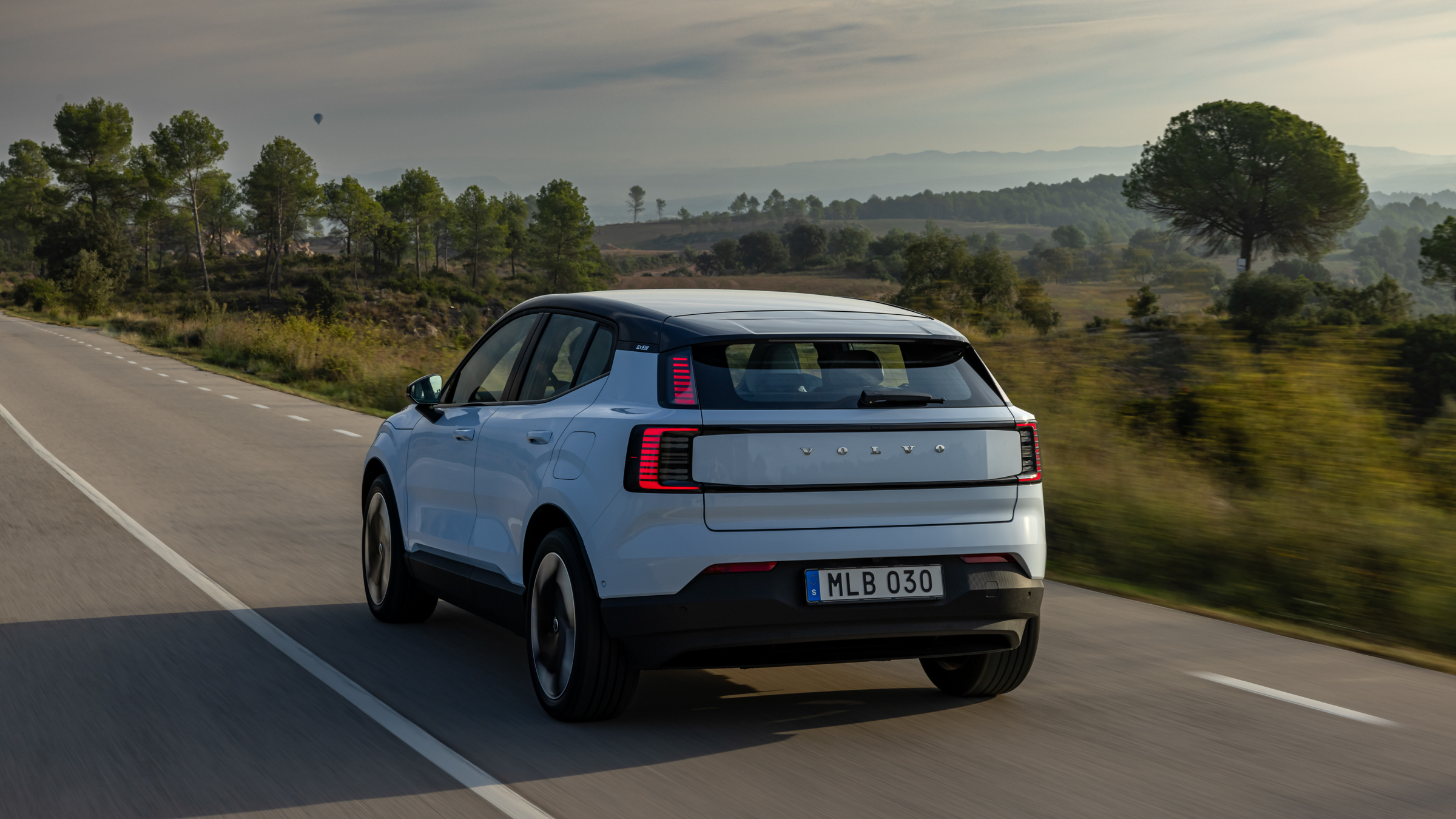
The single-motor variant produces 200 kW (272 horsepower) and 343 Nm of torque, and accelerates to 60 mph in 5.4 seconds (or 5.1 if you go for the larger battery). Such performance is absolutely plenty for a small Volvo SUV, and means there’s really no reason to pay extra for the dual-motor variant. This adds a motor to the front axle and takes the total output up to 315 kW (428 horsepower) and 543 Nm. The 0-60 mph time falls to a frankly absurd 3.4 seconds, which is slightly quicker than an Aston Martin DB12.
Although highly amusing once or twice, such acceleration feels entirely at odds with the rest of the car. The EX30 doesn’t have a sport mode and nor is it treated to the trick Öhlins dampers used by its sister brand Polestar. You’d expect such performance from a miniature Polestar, but from Volvo it feels incongruous.
The dual-motor car is only £2,500 more than the single-motor, but coughing up the cash would reinforce the marketing department’s misguided belief that the young families the EX30 suits best spend their weekends drag-racing supercars at the traffic lights.
Even without all that power, the EX30 is a fun car to drive and an easy one to grow fond of. The steering lacks feel but is light, direct and the small wheel helps make the car feel nimble through the corners. Regarding efficiency, we saw between 3.6 and 3.8 miles per kWh during our drive, which when multiplied by the capacity of the larger battery equals a real-world range of about 237 miles. Volvo says the larger battery can refill at a maximum rate of 153 kW, while the smaller battery manages 134 kW. This means a 10-80 percent charge time of about 27 minutes in both cases.
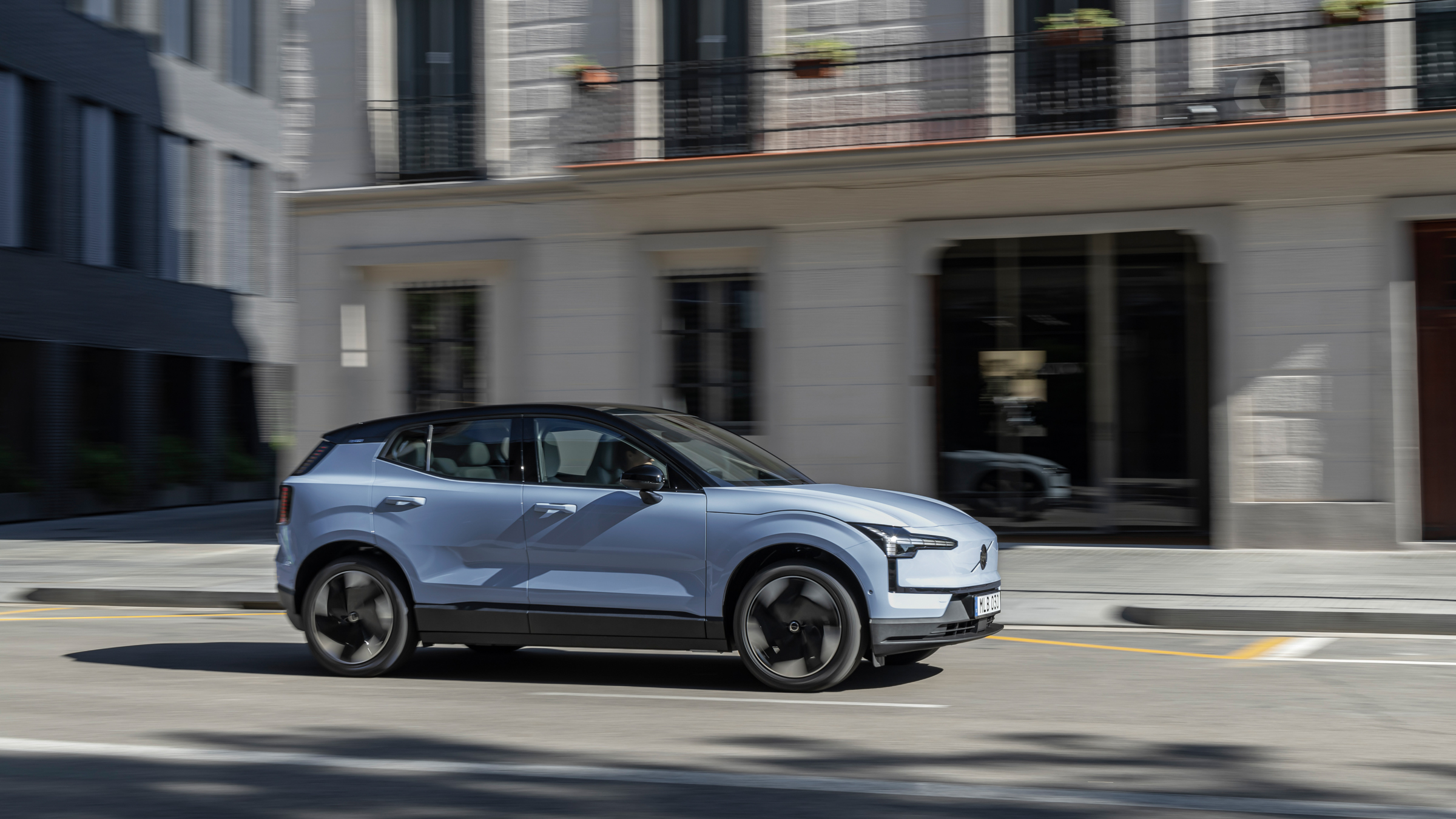
Should I buy a Volvo EX30?
I wanted to love the Volvo EX30, and while I came away from the first drive impressed, I can’t say I am entirely sold just yet. With the test cars being pre-production, and with Volvo insisting software development is ongoing, it’s hard to come to a definitive verdict.
Once the bugs have been ironed out, however, the EX30 should shine bright as a stylish, affordable and practical EV adept at city driving and longer journeys alike. It could be the ideal car for a young family, and I can absolutely see myself owning and enjoying one in the years to come.
For now though, I’ll reserve a final verdict until customer cars are available and I’ve had a chance to log in and really let the EX30 under my skin.
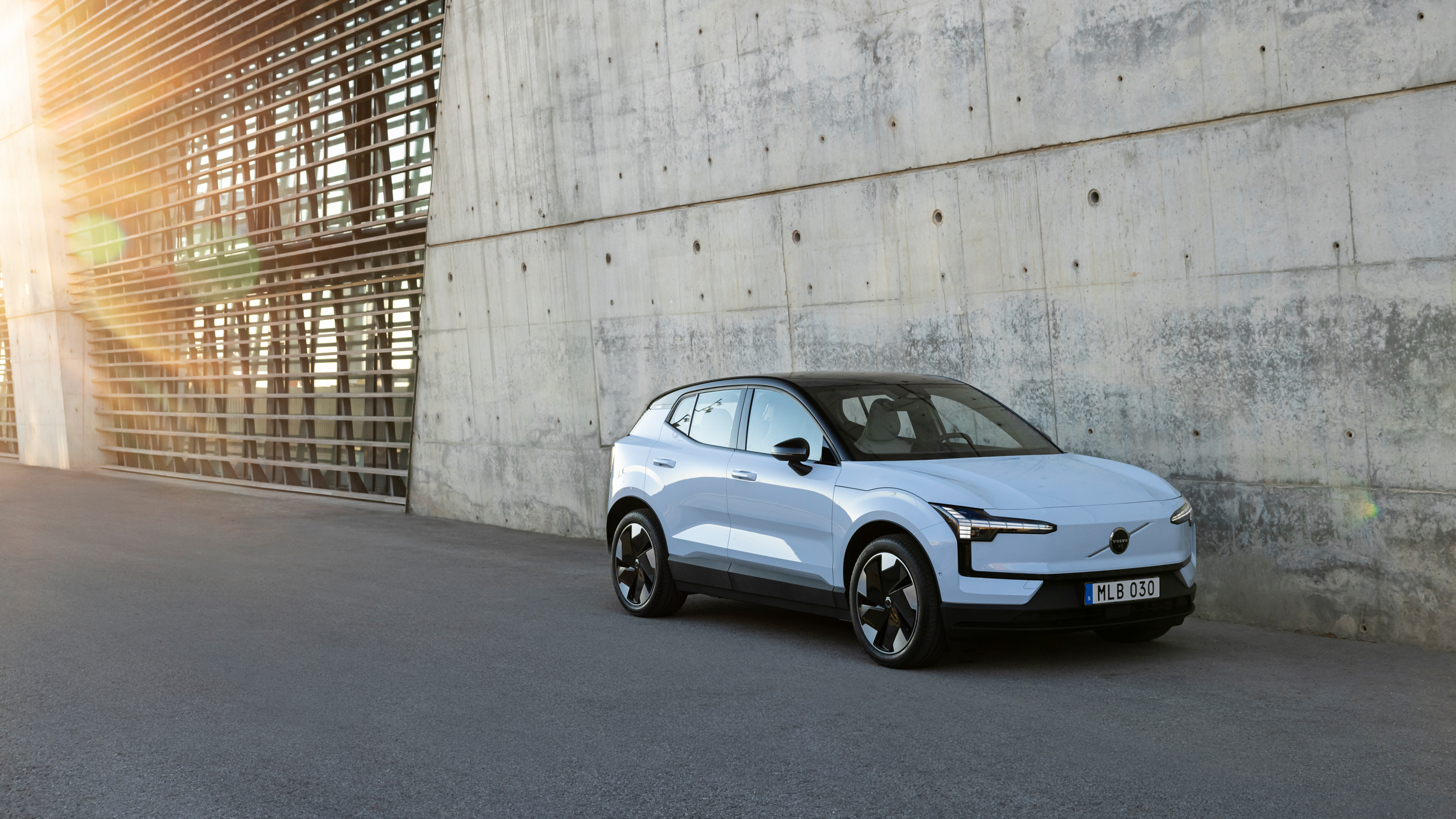
Looking for a home charger? Take a look at our best EV charger guide to find the right model for you.
Alistair is a freelance automotive and technology journalist. He has bylines on esteemed sites such as the BBC, Forbes, TechRadar, and of best of all, T3, where he covers topics ranging from classic cars and men's lifestyle, to smart home technology, phones, electric cars, autonomy, Swiss watches, and much more besides. He is an experienced journalist, writing news, features, interviews and product reviews. If that didn't make him busy enough, he is also the co-host of the AutoChat podcast.
